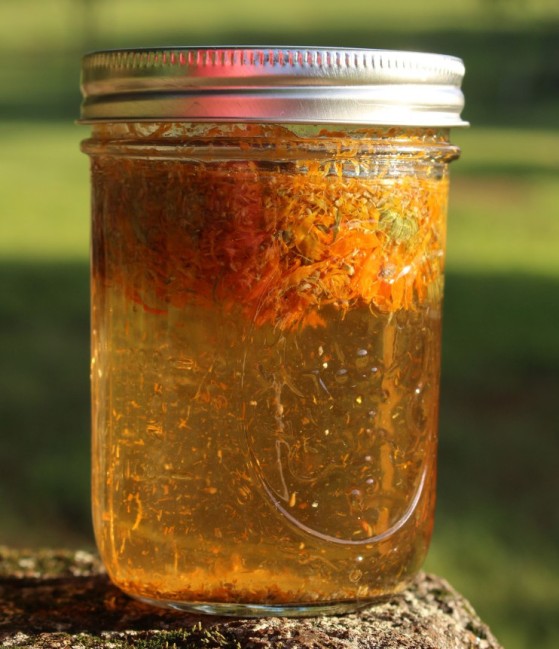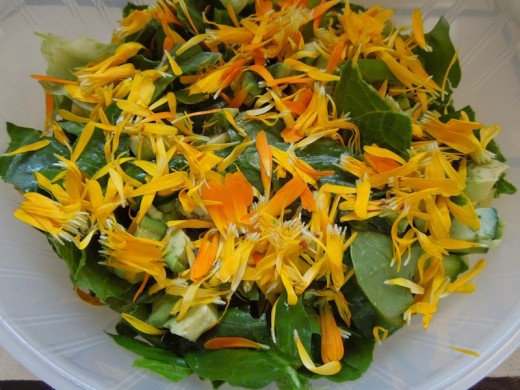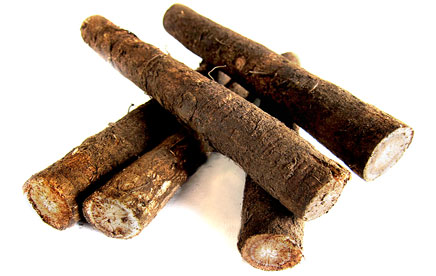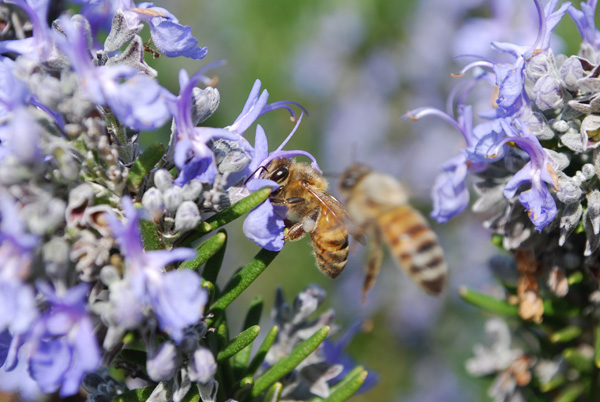Background
Names
- Botanical Name: Calendula officinalis
- Other Names: Bullseye, garden marigold, genda, gold-bloom, holligold, marigold, pot marigold, marybud, zergul
- Etymology: The name “calendula” comes from the plant’s tendency to bloom along with the calendar, typically flowering at the same time in the moon’s cycle. The name “pot marigold” comes from calendula’s use in German stews.

Growth
- Appearance: Calendula flowers range from yellow to orange. The blooms resemble highly-colored daisies. The stems grow from 30-60 cm (12″-24″). The flowers open in the morning and close at night.
- Cultivation: Native to the Mediterranean, calendula grows in its natural habitat nearly year-round. An annual, calendula seeds can be sown directly in the garden in April or even in the fall in warmer climates. Although calendula prefers sunshine, rich soil, and occasional watering, it still grows well when neglected. Don’t be afraid to pick the flowers; the more you take, the more calendula gives. Flowers are ready to pick when they are sticky with anti-fungal resin.
- Parts used: Flower
History
- Greek and Roman: Romans and Greeks used Calendula garlands in ceremonies.
- Catholic: Some Catholics call the plant “Mary’s Gold” and use it in ceremonies to honor the virgin
- Hinduism: Calendula has been used as decorating for Hindu temples, statues and ceremonies
- Dye: Much cheaper than saffron, calendula is used as a dye for food and fabric
- Battlefield: Calendula was used to stop bleeding and heal wounds during the American Civil War and World War I
- Traditional uses: Dye, cuts and wounds, digestive system
- Symbolism: Endurance, grief, pain, Virgin Mary

+ + +
Medicinal and Practical Uses
*I write about uses for plants as a novice herbalist, not a doctor or scientist; this isn’t medical advice. If you want to use plant-based remedies, find a doctor you trust and respect who also trusts and respects you so that you can work together to make sure you’re the healthiest version of you.
- Safety: Generally considered safe but may cause an allergic reaction in some individuals who are allergic to daisies, mums, ragweed, or asters. Calendula should not be taken by people who are pregnant or trying to get pregnant.
- Primary actions (Secondary actions): aromatic, mild astringent,diaphoretic, mucilaginous, (antibacterial, anti-inflammatory, anti-pyretic, antiseptic, antispasmodic, febrifuge, lymphatic, vulnerary)
- Characteristics: dry, cool
- Constituents: calendulin, beta-carotene

Circulation
- Bleeding: Calendula applied locally can help stop small cuts from bleeding.
Digestion
- Indigestion: When consumed, calendula can sooth digestive issues such as cramps and diarrhea

Immune system
- Wounds: Calendula promotes cell growth and keeps infection at bay, which can help wounds heal faster.
- Fever: Calendula can be drank or used externally as a poultice to keep fevers down.
- Swollen lymph nodes: Along with exercise, consuming calendula can stimulate the lymph nodes and remove congestion.
- Ear infections: Calendula drops have been used to treat child ear infections.
- Canker sores: A strong calendula tea used as a mouth wash can speed the healing or canker sores.
Mind/Body
- Itch: Calendula soothes itch associated with skin irritations.

Skin and Hair
- Burns: Calendula salve can help sooth minor cooking burns and sunburns.
- Skin Irritation: Whether eczema, diaper rash, or a rash, calendula helps sooth itching and pain while promoting healing.
- Insect bites and stings: Calendula salve or fresh calendula rubbed on the affected area soothes bee and wasp stings as well as mosquito bites.
+ + +
Cooking
- Calendula used to be used to color cheese and butter
- Calendula is drank as a tea for flavor as well as its medicinal qualities
- Calendula flowers can be eaten fresh in salads

+ + +










